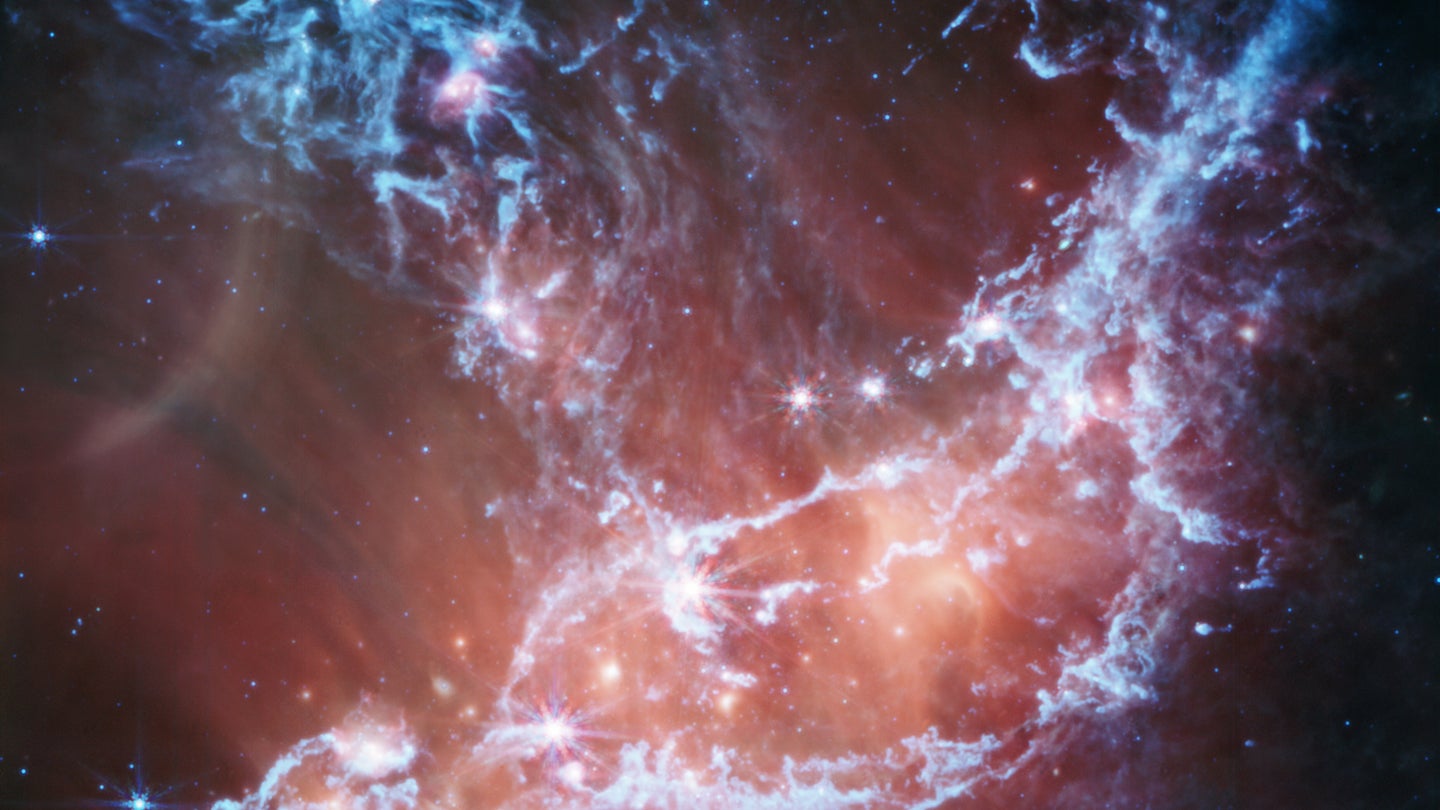This new infrared image of NGC 346 traces emissions from cool gas and dust.

The James Webb Space Telescope (JWST) is showing off its imaging prowess again, this time with a stellar image of NGC 346. This is the brightest and biggest star-making region in a satellite galaxy of the Milky Way called the Small Magellanic Cloud (SMC). The SMC is about 21,000 light-years away in the southern constellation Tucana.

The image that looks like Edgar Allan Poe’s ominous raven in some angles was taken using Webb’s Mid-Infrared Instrument (MIRI). The blue wisps of light show emissions from molecules like silicates and polycyclic aromatic hydrocarbons. The red fragments highlight dust that is warmed by the largest and brightest stars in the center.

An arc at the center left might be a reflection of light from the star near the center of the arc, and similar curves appear to be associated with strats at the lower left and upper right. The bright patches and filaments denote areas with large numbers of protostars. While looking for the reddest stars, the research team found 1,001 pinpoint sources of light. Most of these are young stars still snuggled up in their dusty cocoons.

This SMC is more primeval than the Milky Way since it possesses fewer heavy elements. According to NASA, these elements are forged in stars through nuclear fusion and supernova explosions, compared to our own galaxy.
“Since cosmic dust is formed from heavy elements like silicon and oxygen, scientists expected the SMC to lack significant amounts of dust,” NASA wrote in a press release. “However the new MIRI image, as well as a previous image of NGC 346 from Webb’s Near-Infrared Camera released in January, show ample dust within this region.”

Astronomers can combine JWST’s data in both the near-infrared and mid-infrared data to take a fuller census of the stars and protostars within this very dynamic region of space. This could help us better understand the galaxies that have existed billions of years ago, during an era known as Cosmic Noon. During Cosmic Noon, star formation was at its peak. Heavy element concentrations were lower, which we can see when we study the SMC.

This raven-like image is not the first JWST image that is picture perfect for spooky season. In September 2022, it released chilling new images of 30 Doradus aka the Tarantula Nebula. The nebula’s arachnid inspired nickname comes from its similar appearance to a burrowing tarantula’s silk-lined home. The Tarantula Nebula is about 161,000 light-years away from Earth in the Large Magellanic Cloud galaxy, which is home to some of the hottest and biggest stars known to astronomers.
JWST has also imaged the “bones” of IC 5332, a spiral galaxy over 29 million light years away from the Earth in the constellation Sculptor. The uniquely shaped galaxy has a diameter of roughly 66,000 light years, making it slightly larger than our Milky Way galaxy. The MIRI aboard the new telescope observes the furthest reaches of the universe and can see infrared light, so it’s able to peer through the galaxy’s clouds of dust and into the “skeleton” of stars and gas underneath its signature arms. MIRI basically was able to take an x-ray of a galaxy, revealing IC 5332’s bones and a world that looks different, yet somewhat the same.